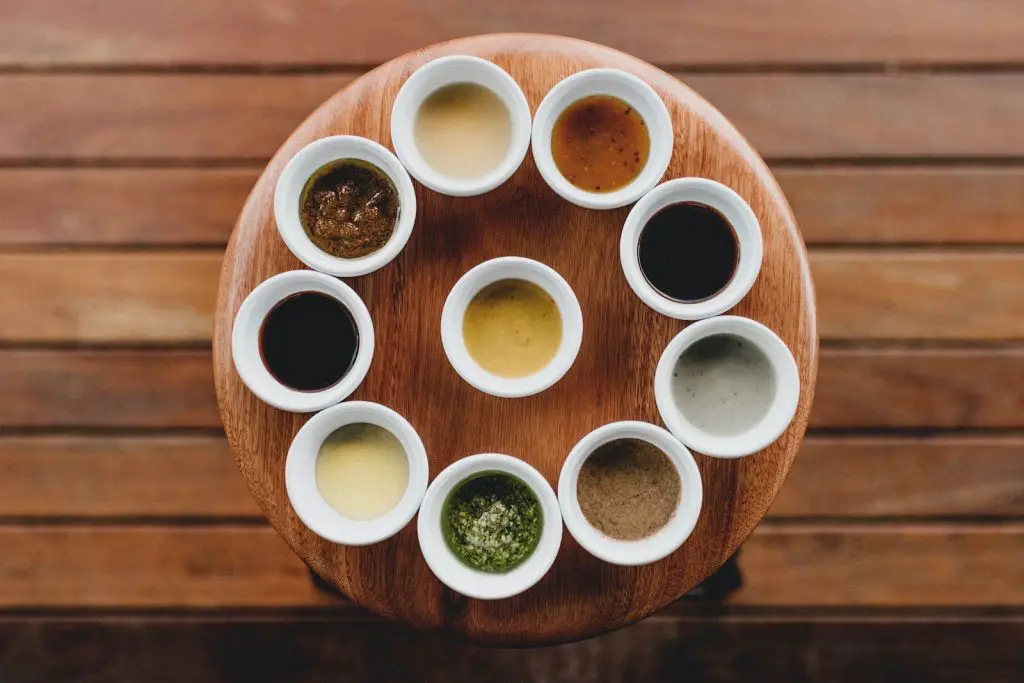
Coffee beans are a beloved source of aromatic and flavorful brews that awaken our senses in the morning or throughout the day. Whether you have a surplus of coffee beans or simply want to preserve their freshness for an extended period, freezing them can be an excellent solution. Freezing coffee beans helps to maintain their flavor, aroma, and overall quality, ensuring that each cup you brew is as delightful as the first. By properly storing and freezing coffee beans, you can lock in their natural oils and flavors, allowing you to enjoy a rich and satisfying coffee experience whenever you desire. So, if you’re looking to keep your coffee beans fresh for longer, freezing them is a simple and effective method that ensures your future cups of coffee are a delicious delight.
Here are the steps to freeze coffee beans:
Step 1: Allow the coffee beans to cool down
After roasting or purchasing freshly roasted beans, it’s important to let them cool down completely before freezing. This allows any residual heat to dissipate and prevents condensation from forming inside the packaging.
When coffee beans are roasted, they undergo a process that involves high temperatures, causing the beans to release moisture and oils. This process is crucial for developing the beans’ flavors and aromas. After roasting, the beans are typically left to cool down before packaging or use.
When it comes to freezing coffee beans, it’s essential to allow them to cool down completely first. If you place hot or warm beans directly into the freezer, the temperature difference can create condensation inside the packaging. This moisture can lead to freezer burn and degrade the quality of the beans over time.
By letting the beans cool down to room temperature, you allow any residual heat to dissipate naturally. This helps to minimize moisture and condensation, ensuring that the beans freeze without the risk of freezer burn. It also helps preserve the volatile compounds responsible for the beans’ flavors and aromas.
Once the beans have cooled down, they are ready to be packaged and prepared for freezing. This simple step of cooling down the coffee beans ensures that they retain their quality and taste when frozen, allowing you to enjoy a fresh and flavorful cup of coffee even months later.
Step 2: Divide the coffee beans into desired portions
Depending on your brewing needs, you can either freeze the entire batch or divide the beans into smaller portions. This way, you can defrost only the amount you need each time, minimizing waste.
Dividing the coffee beans into desired portions before freezing offers several advantages. Firstly, it allows you to have better control over the amount of coffee you defrost and use at any given time. Instead of having to thaw the entire batch, you can defrost only the portion you need for a single brewing session. This helps in minimizing waste and ensures that you always have freshly defrosted coffee beans available.
Furthermore, dividing the coffee beans into smaller portions also helps in preserving their freshness and flavor. When you repeatedly thaw and refreeze the same batch of coffee beans, it can lead to quality degradation over time. By dividing the beans into smaller portions, you can avoid the need for repeated thawing and refreezing. This helps in maintaining the overall quality of the remaining beans and extends their shelf life.
Dividing the beans into portions also offers flexibility in terms of experimentation with different brewing methods or coffee blends. You can freeze different types of coffee beans or portion sizes, allowing you to conveniently switch between them based on your preferences or mood. It provides an opportunity to explore various flavors and profiles without having to commit to a large quantity of a single type of coffee.
To divide the coffee beans into portions, you can use resealable freezer bags, airtight containers, or any suitable packaging that ensures proper sealing and protection from moisture. Ensure that each portion is adequately sealed to maintain the freshness and prevent any cross-contamination of flavors.
Step 3: Seal the coffee beans in an airtight container
To protect the coffee beans from moisture and air, transfer them to an airtight container. A vacuum-sealed bag or airtight freezer-safe container works best for this purpose.
Properly sealing the coffee beans in an airtight container is crucial to preserve their freshness, flavor, and aroma during freezing. Coffee beans are highly susceptible to moisture and oxygen, both of which can accelerate the staling process and degrade the quality of the beans over time.
When exposed to air, coffee beans can absorb moisture and odors from their surroundings, leading to flavor deterioration and loss of aroma. Additionally, oxygen exposure causes oxidation, which negatively impacts the oils and volatile compounds responsible for the rich flavors and aromas in coffee.
By transferring the coffee beans to an airtight container before freezing, you create a protective barrier that prevents moisture and air from reaching the beans. This helps to maintain their quality and preserves the unique characteristics of the coffee.
Vacuum-sealed bags are particularly effective in removing excess air and creating a tight seal around the coffee beans. These bags remove oxygen from the packaging, further minimizing the risk of oxidation. Airtight freezer-safe containers with secure lids are also suitable for sealing the coffee beans and preventing air and moisture intrusion.
It is important to note that the chosen container should be specifically designed for freezer storage. Regular food storage containers or bags may not provide adequate protection against freezer burn or maintain a proper seal. Freezer-safe containers are typically made from materials that can withstand low temperatures without compromising their integrity.
When transferring the coffee beans to the airtight container, make sure to remove as much air as possible before sealing. This can be achieved by pressing out the air from the bag or using a vacuum sealer to create a tight seal.
Properly sealing the coffee beans in an airtight container minimizes exposure to air and moisture, allowing them to retain their freshness, flavors, and aromas for an extended period. This step ensures that when you eventually brew the coffee, you can enjoy a cup that is as close to freshly roasted as possible.
Step 4: Label and date the container
To keep track of the storage time and type of coffee beans, label the container with the date of freezing and the coffee bean variety. This step ensures that you can use the beans within the recommended timeframe for optimal flavor.
Labeling and dating the container of frozen coffee beans is essential for maintaining freshness and maximizing flavor. Coffee beans have a limited shelf life, even when frozen, and their flavor profiles can change over time. By providing clear information about the date of freezing and the type of coffee beans, you can keep track of their storage time and make informed decisions about their usage.
When freezing coffee beans, it’s recommended to consume them within a specific timeframe to enjoy their best flavors. The ideal storage duration can vary depending on factors such as the roast level, bean quality, and personal preferences.
By labeling the container with the date of freezing, you have a reference point to determine the duration the coffee beans have been frozen. This information helps you to prioritize the use of older batches before moving on to more recently frozen beans. It ensures that you consume the beans within the recommended time frame to enjoy the freshest and most flavorful cup of coffee.
In addition to the date, it is also helpful to label the container with the type or variety of coffee beans. This is particularly beneficial if you have multiple types of beans stored in the freezer. Different coffee beans can have distinct flavor profiles, and by labeling them, you can easily identify and select the desired beans for your brewing needs.
Labeling the container can be as simple as writing the information directly on the packaging or using adhesive labels. Make sure the label is clear and legible to avoid any confusion later on.
Step 5: Place the container in the freezer
Put the tightly sealed container of coffee beans in the freezer. Make sure to position it away from strong-smelling foods to avoid absorbing any odors.
After properly sealing the container of coffee beans, it’s time to place it in the freezer for long-term storage. Freezing the coffee beans helps to preserve their freshness and flavor until you’re ready to use them. However, it’s important to consider the placement of the container within the freezer to ensure the best quality retention.
When placing the container of coffee beans in the freezer, it’s crucial to keep it away from strong-smelling foods or any items with potent odors. Coffee beans are highly porous, and they can easily absorb surrounding odors. If stored near foods like onions, fish, or other strong-smelling items, the coffee beans may take on those odors, affecting their flavor when brewed.
To avoid any flavor contamination, position the coffee bean container away from other food items in the freezer. Ideally, place it in a separate section or compartment, if available. This isolation helps to maintain the integrity of the coffee beans and ensures that their natural aromas and flavors are preserved.
If you have limited space in the freezer, you can consider using odor-resistant packaging or double-bagging the coffee beans to provide an extra layer of protection against odor absorption. This can be done by placing the sealed container of coffee beans inside a resealable freezer bag.
Step 6: Thaw and use the coffee beans when needed
When you’re ready to use the frozen coffee beans, remove the desired portion from the freezer and allow them to thaw at room temperature. Avoid refreezing any beans that have been thawed, as it can affect the taste and quality.
Thawing the frozen coffee beans properly is crucial to maintain their flavor and ensure the best brewing results. When you’re ready to use the coffee beans, follow these steps for optimal results:
Remove the desired portion: Take out the amount of coffee beans you need for your brewing session. It’s important to only thaw the portion you intend to use at that time, rather than thawing the entire batch. This helps in minimizing waste and preserving the freshness of the remaining frozen beans.
Thaw at room temperature: Place the portion of coffee beans in a dry container or on a clean surface at room temperature. Allow them to thaw naturally without applying any additional heat or using a microwave. Thawing at room temperature helps to preserve the flavor compounds and oils within the beans, ensuring a more flavorful cup of coffee.
Avoid refreezing thawed beans: Once the coffee beans have thawed, it’s important to avoid refreezing them. Refreezing thawed beans can negatively impact their taste and quality. The moisture that forms during the thawing process can lead to degradation and loss of flavor. Therefore, it’s best to plan your usage accordingly and only thaw the amount of coffee beans you intend to brew.
Use the thawed coffee beans promptly: Once the coffee beans have thawed, it’s recommended to use them within a reasonable time frame to enjoy the best flavor. Ideally, aim to brew the coffee within a few days of thawing to experience the optimal taste and aroma.
Remember, once you have thawed the coffee beans, it’s important to store any remaining unused portion in an airtight container and consume it within a reasonable timeframe for the best coffee experience.
Other related questions
How long can coffee beans last in the freezer?
Coffee beans can last in the freezer for up to 3 to 6 months while maintaining their flavor and quality. The duration of storage depends on factors like the roast level, bean quality, and packaging. Properly sealed and stored coffee beans have a longer shelf life in the freezer, allowing coffee lovers to enjoy fresh and flavorful cups of coffee even months after the beans have been frozen.
How do I know if the coffee beans have gone bad after being frozen?
To determine if frozen coffee beans have gone bad, you should look for signs such as a rancid or off odor, a stale or flat taste, or visible mold growth. If the beans exhibit any of these indications, it’s likely that they have deteriorated and should be discarded. Proper storage and adherence to recommended freezing times can help prevent the beans from going bad and ensure a better coffee experience.
Can I reuse the same frozen coffee beans multiple times?
Reusing the same frozen coffee beans multiple times is not recommended. Freezing and thawing can affect the flavor and quality of the beans, and subsequent brews may result in a weaker or less flavorful cup of coffee. It is best to use the frozen coffee beans for a single brewing session, ensuring the best taste and aroma.
Is freezing coffee beans a good idea?
Freezing coffee beans can be a beneficial practice for extending their shelf life and preserving their flavor. When stored properly in airtight containers, freezing helps to slow down the staling process, maintaining the freshness of the beans. However, it is important to note that freezing may cause some minor changes in flavor and aroma, and the beans should be used within the recommended timeframe for optimal results. Overall, freezing coffee beans can be a good idea for those looking to prolong their coffee’s quality and minimize waste.
Is it OK to grind frozen coffee beans?
Grinding frozen coffee beans is generally acceptable and can yield satisfactory results. Freezing the beans helps to preserve their flavor and aroma, and grinding them while still frozen can help maintain those qualities. However, it’s important to note that grinding frozen beans may require adjustments to the grind size and brewing parameters to achieve the desired extraction. Experimentation and adjusting the grind settings accordingly can help achieve the best results when grinding frozen coffee beans.
Do frozen coffee beans damage your grinder?
When grinding frozen coffee beans, there is a potential risk of damaging your grinder if precautions are not taken. The hard and solid nature of frozen beans can put strain on the grinder’s motor and burrs, potentially leading to mechanical issues over time. To minimize the risk, it’s important to ensure your grinder is designed to handle frozen beans and has the necessary power and durability. Using a grinder specifically designed for grinding frozen coffee beans or allowing the beans to thaw slightly before grinding can help mitigate the risk of damage to your grinder.
Can I freeze flavored or pre-ground coffee beans?
Flavored or pre-ground coffee beans can be frozen, but there are some considerations to keep in mind. Freezing flavored coffee beans may affect the intensity of the added flavors, so it’s important to assess whether the flavor profile meets your expectations after freezing. As for pre-ground coffee, it has a larger surface area, making it more susceptible to moisture absorption and flavor degradation during freezing. For optimal results, it is generally recommended to freeze whole, unflavored beans and grind them as needed.








